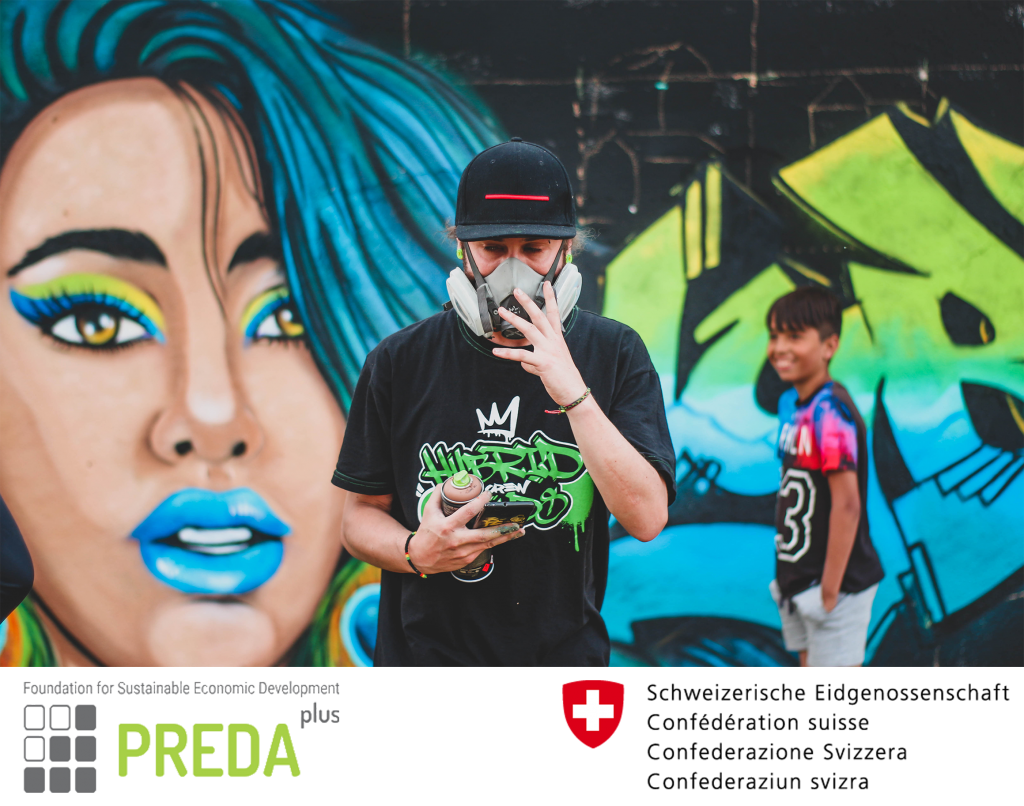Roma Housing Sensibilization and Mapping

MACEDONIA, BITOLA
SOCIAL INCLUSION
(4 months)
THE CHALLENGE
| Inadequate and substandard housing is typical of most Roma-populated municipalities, such as Bitola. Roma mostly live in ghettoized settlements with poor infrastructure and substandard conditions that additionally perpetuate social exclusion. Often, the inhabitants of the Roma settlements have issues with the property documentation. In the residential area of Bair there are still buildings and homes that have substandard living conditions. Another problem is a lack of updated and comprehensive information about number of houses legally and illegally built in the Bair settlements populated by Roma. The Local Government so far has not yet prepared quantitative data and systematic information that would have suggested to a certain condition of Roma people in terms of housing in Bair settlement. There is no information for the number of houses located on land which according DUP or GUPis not designed for housing. In this regard, Local Government is very slow in managing to comply the urban planning with the real situation. All that linked to the poor socio-economic condition, limited access to social and health services, lack of education and employment opportunities. The above-mentioned issues regarding housing cause deficiency identified as the inability to have an access to a dignified life. In the Republic of North Macedonia, there is a lack of mapping of Roma settlements that are not covered by the detailed urban plans, and consequently in the Law on Spatial and Urban Planning, which regulates (among other things) the adjustment of detailed urban plans in the municipalities where the Roma settlements are must be mentioned in this context. In order to enable the Roma population to benefit from the Law on Legalization of Illegal Buildings from 2011, the Roma Information Centre of Bitola has started activities to support the provision and submission of legalization documents to Local Government, also by abolishing the related fees for the required geodetic reports. However, this measure does not apply to the majority of Roma living in substandard conditions in the Bair settlements, since this area is not part of the existing urban plan and the legalization process cannot be realized. |
THE SOLUTION
| The Action intends to contribute in setting up the ground for further improvement of the urban and social inclusion of Roma communities living in poor and informal settlements in Bitola Municipality (Overall Objective). It will serve as a basis for application of another bigger intervention (project) using holistic and integrated approach later on that will connect different sectors/components of the society (e.g. urban planning, housing, common infrastructures, access to educational and healthcare services, employability, promotion of culture) to facilitate the creation of an inclusive and supportive environment for the local communities living in Bitola and, in particularly, in Bair neighbourhood. The Action will follow innovative and strategic methodologies, such as participatory planning, co-design, urban regeneration and community mobilisation, that will stimulate positive social changes to the context. Target groups and local communities will be called to actively participate in the urban regeneration and local development processes. The Specific Objectives (SOs) are the following: SO 1: To improve access of information to Roma households based in Bair neighbourhood (Bitola) through the active involvement of the local community for the neighbourhood regeneration; SO 2: To map Roma communities living in Bair neighbourhood (Bitola) in order to contribute to proper future urbanization and improvement of Roma housing. |
ACTIVITIES
1.1. Public debates on urbanization for Roma
1.2. Sensitization sessions and guerilla action about mapping and benefits of inclusive urbanization
2.1. Small -infrastructure intervention Housing Support Centre
2.2 Awareness raising on needs in urbanization in Roma community
3.1 Establishment and training of IST (Inclusive Support Teams)
3.2 Design and Equipment of data collection tools for ISTs
3.3. Field visits and data collection
3.4. Data Analysis and presentation of the findings with the general public
THE IMPACT
| Through the realization of the planned project activities, in a short period of 8 months, project managed to build communication between local authorities, public enterprises and the population of Bair and create an inclusive and supportive atmosphere for solving urban challenges and stimulating positive social change. During the project duration over 870 surveys of Roma families were conducted to collect data for a comprehensive assessment of Roma households. Collected data was analyzed and preseted in the stydy “Mapping for Social Inclusion of the Roma Community in the Settlement Bair in the Municipality of Bitola” |
The study contains relevant and credible information that will help local governments develop effective sustainable urban plans and define tailored and effective urban planning and social inclusion policies based on the real needs of citizens.


Funding:
CHF 58,939.00
Donator
Swiss Agency for Development and Cooperation (SDC)
Partners
Preda Plus
